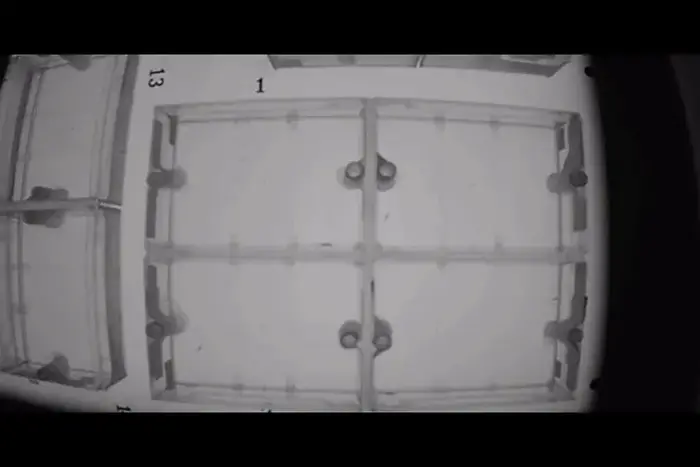Fish from the same species can evolve their sense of smell and display individual foraging ‘personalities’ to successfully find food in different habitats, according to new research.

Credit: Blin et al.
Fish from the same species can evolve their sense of smell and display individual foraging ‘personalities’ to successfully find food in different habitats, according to new research.
In the study, published today as a Reviewed Preprint in eLife, researchers developed a high-throughput behavioural assay to test spontaneous swimming and differences in the sense of smell of individual Mexican cavefish larvae. eLife editors described the work as important, presenting compelling evidence that the surface and cave morphs of the fish show different olfactory preferences and odour sensitivities, and that individual fish show substantial variability in their spontaneous activity that is relevant for olfactory behaviour.
“With more than 26,000 species representing half of all vertebrates, bony fishes are extremely diverse and have colonised all possible ecological niches, through their ability to adapt their sensory systems,” says lead author Maryline Blin, a Research Engineer at Paris-Saclay Institute of Neuroscience (NeuroPSI – CNRS, Université Paris-Saclay), France. Yet, although the comparative anatomy of fish brains is well documented, behavioural studies have mainly focused on a few model species such as zebrafish. The links between how fish sensory systems evolve and resulting fish behaviour remain poorly understood and hinder cross-species comparisons.
To study the evolution of smell-driven behaviours in a laboratory setting, the researchers chose two closely related fish of the Mexican tetra species – the blind cave-dwelling subtype, and its sighted surface river-dwelling counterpart. Cavefish have larger olfactory pits (the ‘nose’ tissue) and different nerve composition than their surface-dwelling relatives, but their genetic make-up related to smell is thought to be similar. This led the team to test a hypothesis that the superior sense of smell in the cave-dwelling fish is an adaptive trait that facilitated their survival in their extreme subterranean habitat. To test this, they observed behaviours of individual fish in response to different food odours, comparing the swimming patterns of the surface and cave-dwelling subtypes.
After studying baseline swimming patterns, the team tested their response to different amino acid ‘foods’. Alanine, a potent food cue for most fish species, induced a strong behavioural response in cave-dwelling fish, decreasing the number of back-and-forth swims, slowing down swimming and shifting swimming activity towards the source of the amino acid. By contrast, the surface-dwelling fish responses were more subtle and displayed by only some individuals; there was no major shift in terms of back-and-forth swimming or swimming speed. Together, this suggests the detection threshold for the food source and subsequent behavioural response have significantly evolved in the cave-dwelling fish.
In addition to studying population-level behaviour changes by the fish, the team also studied how individual fish responded to food sources. Although cave-dwelling fish all behaved in a stereotypical manner for the strong odorant alanine, the team observed individual differences in the response of both cave and surface-dwelling fish in response to other amino acid odours. They explored this further by looking at how behaviour changed relative to individual baseline swimming preferences. This revealed that surface-dwelling fish with a lower baseline swimming speed were better able to smell several of the odours. This was not the case for cave-dwelling fish. For them, a special swimming pattern all around the test box was predictive of good olfactory scores for sense of smell. This suggests that each fish’s swimming personality has an influence on its response to smell and the personality traits that predict a strong sense of smell differ between fish within the same species.
“We have developed a high-throughput, specific sense-of-smell test to compare the individual behavioural responses of blind and sighted fish to different odours. In doing so, we have ruled out the possibility that, when within a group, one ‘good-smeller’ individual could drive others to respond,” concludes senior author Sylvie Rétaux, Research Director at NeuroPSI – CNRS, Université Paris-Saclay. “Instead, our recordings of several hundred individual fish highlight an often-overlooked aspect of fish behavioural analyses: that fish may have a ‘personality’ or ‘temperament’ that influences their behaviour and, consequently, their success at responding to environmental cues. Moreover, the good sense of smell in cavefish is a genetically-encoded trait, so we will now actively search for the genetic underpinnings of this sensory specialisation.”
##
Media contacts
Emily Packer, Media Relations Manager
eLife
01223 855373
George Litchfield, Marketing and PR Assistant
eLife
About eLife
eLife transforms research communication to create a future where a diverse, global community of scientists and researchers produces open and trusted results for the benefit of all. Independent, not-for-profit and supported by funders, we improve the way science is practised and shared. In support of our goal, we have launched a new publishing model that ends the accept/reject decision after peer review. Instead, papers invited for review will be published as a Reviewed Preprint that contains public peer reviews and an eLife assessment. We also continue to publish research that was accepted after peer review as part of our traditional process. eLife receives financial support and strategic guidance from the Howard Hughes Medical Institute, Knut and Alice Wallenberg Foundation, the Max Planck Society and Wellcome. Learn more at https://elifesciences.org/about.
To read the latest Evolutionary Biology research published in eLife, visit https://elifesciences.org/subjects/evolutionary-biology.
And for the latest in Neuroscience, see https://elifesciences.org/subjects/neuroscience.
Journal
eLife
DOI
10.7554/eLife.92861.1
Method of Research
Experimental study
Subject of Research
Animals
Article Title
Evolution of olfactory sensitivity, preferences and behavioral responses in Mexican cavefish: fish personality matters
Article Publication Date
19-Dec-2023





